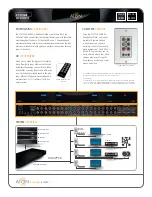
Trap Filtering
Simple Network Management Using Net-SNMP and ftlSNMP
8-33
Trap Filtering
This section discusses the following topics:
•
‘‘
Trap-Filtering Capability
”
•
‘‘
Activating and Deactivating Trap Filtering
”
•
‘‘
Trap-Filtering Examples
”
Trap-Filtering Capability
ftlSNMP provides the ability to filter out transitional traps.
Traps
are messages that
inform you about network events. Hardware components that go in and out of service
trigger a number of traps that are seen at the management client. Some of these traps
are actually transitional state information for devices. For example, when you bring up
a CPU element, the CPU board’s state changes from DIAGNOSTICS to INITIALIZING,
ONLINE, and then DUPLEX. However, if you are interested in only the end-state (for
example, ONLINE and DUPLEX), the trap-filtering capability is useful.
Another reason to use the trap-filtering capability is that some SNMP traps are
triggered by obvious reason codes. For example, when you bring down an I/O element,
the display controller with the device path 10/0 or 11/0 will change state from DUPLEX
to OFFLINE with the reason code of PARENT_EMPTY. If you are not interested in this
type of trap, use the trap-filtering capability.
Activating and Deactivating Trap Filtering
To activate trap filtering, specify the following configuration line in the
/etc/opt/ft/snmp/ftltrapsubagent.conf
file:
sraTrapFiltering on
When you activate trap filtering, traps with the following operational states are filtered
out:
•
DUMPING
•
DIAGNOSTICS
•
DIAGNOSTICS_PASSED
•
INITIALIZING
•
SYNCING
•
FIRMWARE_UPDATE
•
FIRMWARE_UPDATE_COMPLETE
•
UNKNOWN
















































